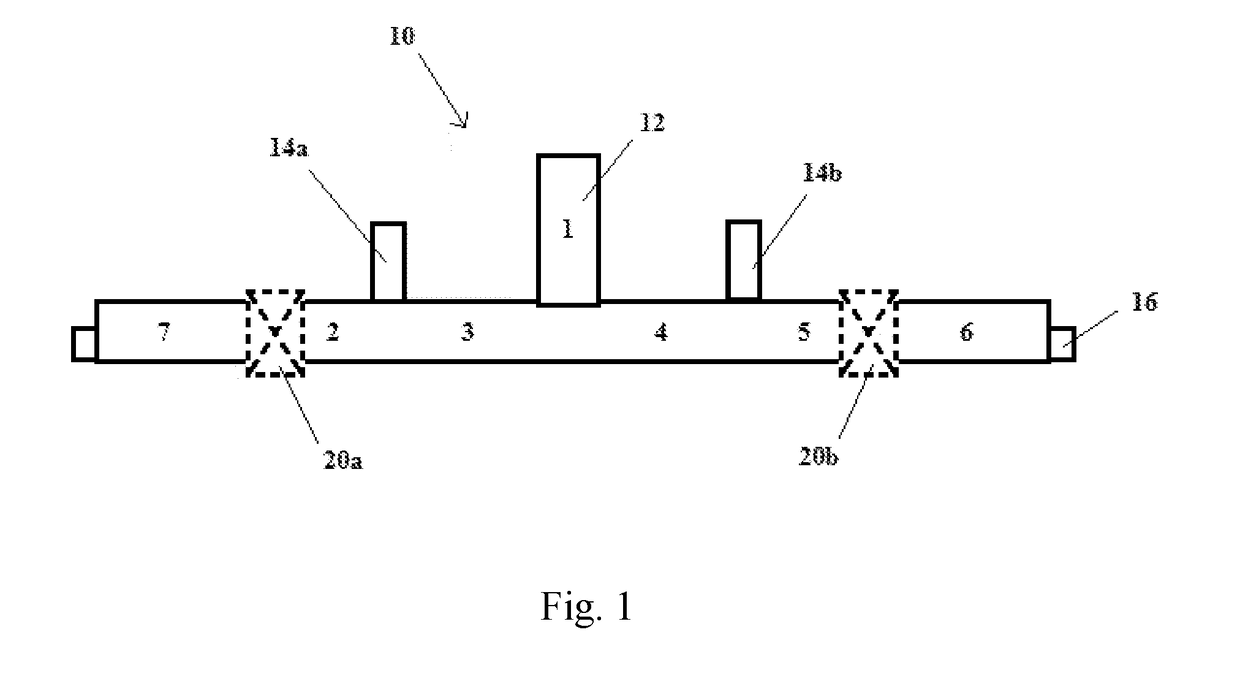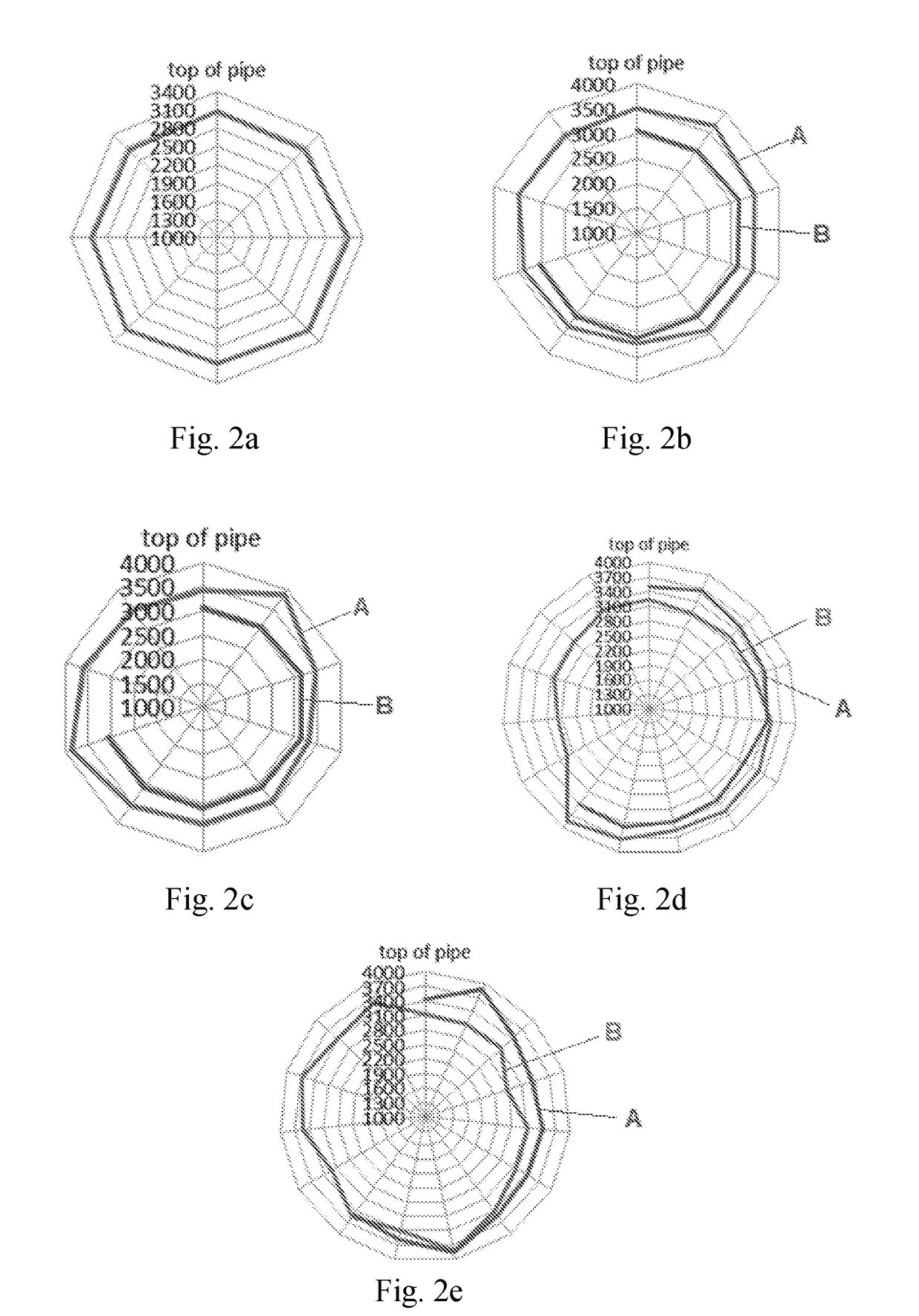Desalting Method and Apparatus
a hydrocarbon feedstock and desalting method technology, applied in the direction of material analysis using wave/particle radiation, refining by water treatment, instruments, etc., can solve the problems of significant damage to refinery equipment, damage commonly observed in the lines, and considerable time and cost involved in replacing damaged refinery equipmen
- Summary
- Abstract
- Description
- Claims
- Application Information
AI Technical Summary
Benefits of technology
Problems solved by technology
Method used
Image
Examples
example 1
of the Line in the First Desalting Process
[0092]Operating conditions at the time of sampling in the first stage are shown in Table 1:
Amount ofwash waterCrudeWash wateradded (% byDeltaValveflowCruderate (barrels / volume ofpressureopen(barrels / velocityhour)crude oil)(psi)(%)hour)(m / s)East2555.51619.54,6251.55mixingvalveWest2645.715.816.54,6251.55mixingvalve
[0093]The radar plot shown in FIG. 2a shows the results of spectra obtained at the crude oil inlet (see location 1 of FIG. 1), i.e. upstream of the wash water inlet. The crude oil contained 3% residual water. This water was injected upstream of cold preheat exchangers. The radar plot shows that the oil and water were mixed uniformly with no distinct water or crude oil phase.
[0094]The radar plots shown in FIGS. 2b-e show the results of spectra obtained at a number of locations (locations 5, 2, 6 and 7 as shown in FIG. 1, respectively). Spectra were obtained at a point in time before the addition of wash water to the system (denoted in...
example 2
of the Line in the Second Desalting Process
[0101]Operating conditions at the time of sampling in the second stage are shown in Table 2:
Amount ofwash waterCrudeWash wateradded (% byDeltaValveflowCruderate (barrels / volume ofpressureopen(barrels / velocityhour)crude oil)(psi)(%)hour)(m / s)Mixing4755.116-16.525.09,2503.14valve
[0102]The radar plot shown in FIG. 5a shows the results of spectra obtained at the crude oil inlet (see location 4 of FIG. 4), i.e. upstream of the wash water inlet. It can be seen that the counts obtained from the line in the second stage were lower than those obtained from the line in the first stage. This difference was due to the amount of water in the crude feeds. Whilst the first stage raw crude oil included 3% residual water, the second stage crude oil feed contained a smaller amount of water (just that carried over from the first stage desalter).
[0103]The radar plots shown in FIG. 5b were obtained upstream of a wash water inlet (at location 4 as shown in FIG. ...
PUM
| Property | Measurement | Unit |
|---|---|---|
| angle | aaaaa | aaaaa |
| angle | aaaaa | aaaaa |
| angle | aaaaa | aaaaa |
Abstract
Description
Claims
Application Information
 Login to View More
Login to View More - R&D
- Intellectual Property
- Life Sciences
- Materials
- Tech Scout
- Unparalleled Data Quality
- Higher Quality Content
- 60% Fewer Hallucinations
Browse by: Latest US Patents, China's latest patents, Technical Efficacy Thesaurus, Application Domain, Technology Topic, Popular Technical Reports.
© 2025 PatSnap. All rights reserved.Legal|Privacy policy|Modern Slavery Act Transparency Statement|Sitemap|About US| Contact US: help@patsnap.com



